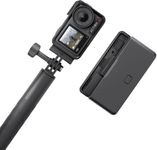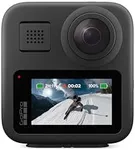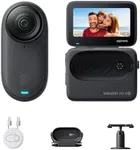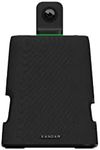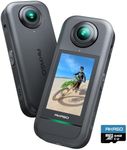Buying Guide for the Best 360 Cameras
When choosing a 360-camera, it's important to consider what you'll primarily be using it for, such as travel, sports, or professional photography. 360-cameras capture everything around you, providing immersive content that can be viewed in virtual reality or on social media platforms. Understanding the key specifications will help you select a camera that meets your needs and enhances your creative projects.ResolutionResolution refers to the amount of detail a camera can capture, measured in pixels. Higher resolution means more detail and clarity in your images and videos. 360-cameras typically range from 4K to 8K resolution. If you plan to use your footage for professional purposes or on large screens, opt for higher resolutions like 8K. For casual use or social media sharing, 4K or 5.7K might be sufficient.
StitchingStitching is the process of combining images from multiple lenses to create a seamless 360-degree view. Good stitching is crucial for a smooth and immersive experience. Cameras with in-camera stitching offer convenience and faster processing, while those requiring software stitching might provide more control and higher quality. If you prefer ease of use, look for cameras with efficient in-camera stitching. For more control over the final output, consider those that offer software stitching options.
StabilizationStabilization helps reduce shakiness in your videos, providing smooth and professional-looking footage. This is especially important if you plan to use the camera for action shots or while moving. There are different types of stabilization, such as electronic and optical. Electronic stabilization is common in 360-cameras and works well for most users. If you need extremely smooth footage, look for cameras with advanced stabilization features.
Field of ViewThe field of view (FOV) indicates how much of the scene the camera can capture. In 360-cameras, this is typically 360 degrees horizontally and 180 degrees vertically. A full 360x180 FOV ensures that you capture everything around you. If you want to ensure no blind spots in your footage, choose a camera with a full 360-degree field of view.
Battery LifeBattery life determines how long you can use the camera before needing to recharge. This is crucial for long shoots or when you're away from power sources. Battery life can vary significantly, with some cameras offering just an hour of recording time, while others may last several hours. Consider how long you'll typically be shooting and choose a camera with a battery life that matches your needs. For extended use, look for models with replaceable batteries or the option to use external power sources.
ConnectivityConnectivity options, such as Wi-Fi, Bluetooth, and USB, determine how you can transfer files and control the camera remotely. Wi-Fi and Bluetooth allow for easy sharing and remote control via smartphone apps, which can be very convenient. If you plan to frequently transfer files or control the camera remotely, ensure it has robust connectivity features. For professional use, look for additional options like HDMI output or Ethernet connectivity.
